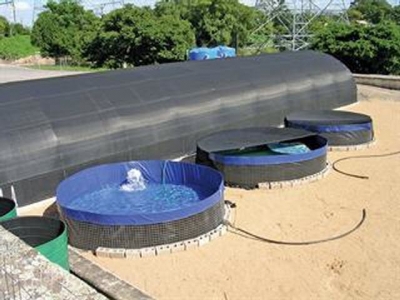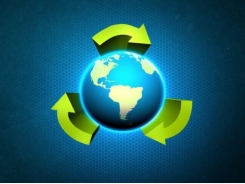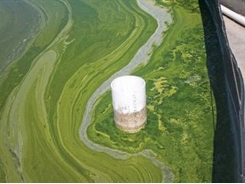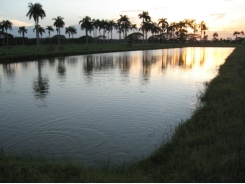Managing water temperature in winter

The high altitude in parts of Southern Africa can play havoc with temperature control on the sub-continent’s tilapia farms. There are, however, measures that can be implemented to counter this.
An example of exactly what not to do: covering a tunnel with shade cloth and locating other components outside the tunnel. Photo: Nicholas James
What to do about falling water temperature, and whether the tilapia will survive, are two of the most frequent questions I’m asked in winter. All but the eastern and north-eastern coastal areas of South Africa have outside water temperatures that are too marginal for tilapia to survive.
In most parts of Asia where tilapia are grown commercially, water temperature is not as big an issue as it is in South Africa. This is because parts of the sub-continent are located at high altitude where freezing temperatures are experienced. As a general rule, cultivating tilapia is a non-starter in any area with frequent or severe frost. I recently heard of a new venture being planned for the Sasolburg area.
Not only does this area have severely polluted water, but winters are so cold that the outside water temperature is often lower than 6°C. This is lethal for tilapia. Even within well-constructed tunnels, which can elevate temperatures by 6°C to 7°C, the water will be at only 12°C to 13°C, which is at the limit of the survival threshold. To heat large volumes of grow-out water with solar or electric heat pumps is not viable in the long-term.
The cost of continuously running a 18kW heat pump, which raises the water in a 180 000l system by 4°C, is R3 100/month. If water temperature of 25°C is required – the temperature at which good growth is achieved – the temperature will need to rise by 12°C, which will require three times the amount of electricity.
The solar alternative
Solar power could provide a viable alternative, but at present the capital investment is unrealistically high. Many systems lose heat unnecessarily through components being located outside the tunnel. Tunnels should be well-sealed to prevent heat loss, which takes place mainly as a result of warm air escaping through leaks in the roof, end-walls or ventilators. These can be effectively sealed with foam rubber, while the ends of the tunnels should preferably be bricked up. This will also make the tunnel more resistant to wind damage.
Advantages of concrete
Concrete grow-out tanks are preferable to those of plastic or fibreglass as they are better insulated. The thick, hollow-block walls of the tanks have better heat retention at night, among other advantages. However, it seems difficult to persuade tilapia producers of this fact; they are too often seduced by attractive off-the-shelf plastic tanks.
Another reason for heat loss is shade cloth. I find this incomprehensible. The tunnel is there to provide a warm interior; why cover it with shade cloth that ends up cooling the interior?
Like most other farming practices in South Africa, we have to accept that tilapia production is a seasonal activity. Ask yourself whether a massive capital and operational investment to supplement heating is really justified.
Related news
Tools

Phối trộn thức ăn chăn nuôi

Pha dung dịch thủy canh

Định mức cho tôm ăn

Phối trộn phân bón NPK

Xác định tỷ lệ tôm sống

Chuyển đổi đơn vị phân bón

Xác định công suất sục khí

Chuyển đổi đơn vị tôm

Tính diện tích nhà kính

Tính thể tích ao




 Electrical conductivity of water, part 1
Electrical conductivity of water, part 1  The impact of atmospheric carbon dioxide, alkalinity in…
The impact of atmospheric carbon dioxide, alkalinity in…